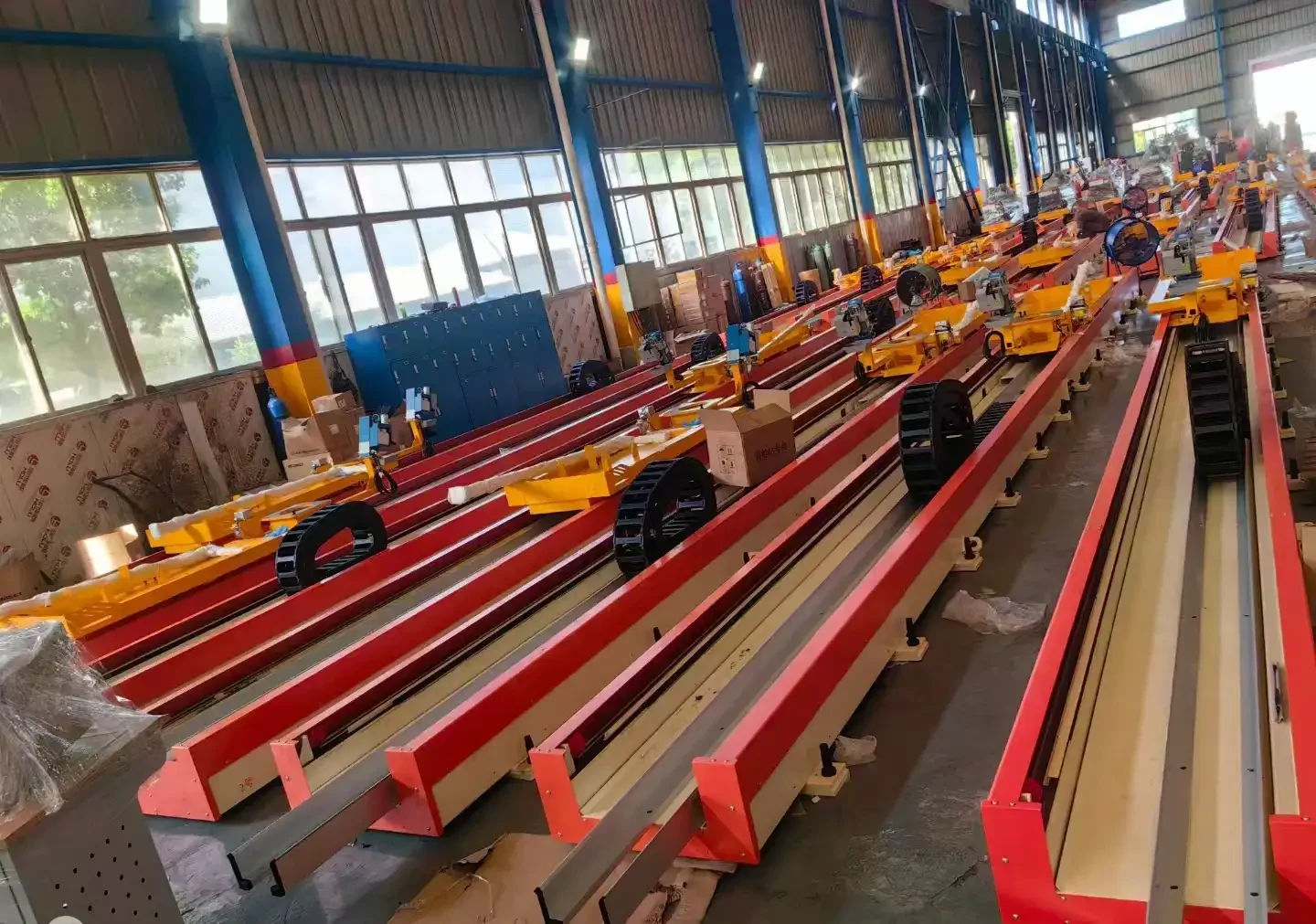- This topic is empty.
-
AuthorPosts
-
22/10/2025 at 22:13 #83474
In modern automated manufacturing, the performance of an industrial robot is not only determined by its control algorithms or actuators but also by the mechanical foundation that supports it—the robot mounting base. A stable and precisely engineered robot mounting base plays a vital role in ensuring accuracy, repeatability, and vibration resistance during operation. Whether it's welding, assembly, packaging, or CNC machining, the base structure determines how well the robot can execute precise motions and sustain continuous loads over time. The robot mounting base provides both physical anchoring and mechanical damping for the robotic system. It acts as the intermediary between the floor and the robot body, absorbing vibrations, aligning positioning axes, and stabilizing high-speed movements. Selecting the correct design, material, and configuration of a robot mounting base can significantly enhance the productivity and reliability of an entire production cell.

Robot Mounting Base Structural Design Considerations
The structural design of a robot mounting base plays a crucial role in ensuring precision, stability, and long-term reliability of robotic systems. Engineers must balance rigidity, vibration control, and accessibility while maintaining compatibility with the robot's dynamic operations. A well-engineered mounting base provides the necessary foundation to support accurate motion trajectories and repeatable performance across high-duty cycles.
Load Capacity and Rigidity
The robot mounting base must have sufficient stiffness to withstand the robot's dynamic forces during acceleration, deceleration, and payload manipulation. Finite Element Analysis (FEA) is typically used to evaluate stress concentration and deformation behavior, ensuring the structure maintains positional accuracy under both static and dynamic loads.
A rigid robot mounting base minimizes deflection and micro-vibrations that can lead to long-term fatigue, calibration drift, or trajectory errors. In heavy industrial robots, such rigidity directly contributes to improved machining accuracy and reduced wear on actuators and joints.Center of Gravity and Stability
Maintaining a low and centered center of gravity is critical to the overall stability of the robot mounting base. Uneven load distribution or a narrow footprint can lead to oscillations or tipping when the robot operates with extended arms or heavy payloads. Engineers often design wider or weighted bases with reinforced anchor points to ensure reliable operation in dynamic environments. A properly balanced robot mounting base enhances safety and allows for faster, smoother movements without compromising accuracy.
Accessibility and Maintenance
Serviceability is another vital factor. The robot mounting base should provide convenient access for cable routing, calibration, and routine maintenance. Modern designs incorporate modular covers, removable panels, and strategically positioned service ports. This allows technicians to perform maintenance without disturbing the robot's calibration or alignment. By simplifying inspection and upkeep, the robot mounting base supports higher equipment uptime and easier integration with plant-floor systems.
Dynamic Vibration Isolation
In high-precision operations, even minor vibrations can cause motion inaccuracies. Vibrations may originate from the robot itself or from nearby machinery. To counteract this, a robot mounting base may integrate elastomeric pads, damping layers, or tuned mass dampers. These features absorb energy and isolate external vibrations, maintaining stable and repeatable positioning. For applications such as laser welding, semiconductor assembly, or 3D printing, vibration isolation within the robot mounting base is a decisive performance factor.
Material Selection for Robot Mounting Bases
The choice of material for a robot mounting base directly affects mechanical performance, weight, cost, and environmental suitability. Each material offers a unique combination of stiffness, damping characteristics, and corrosion resistance. Selecting the right one ensures a balance between performance and practicality.
Steel Mounting Bases
Steel remains the most common choice for industrial robot mounting bases due to its exceptional strength, rigidity, and cost efficiency. It provides the mass needed to resist vibrations and withstand repetitive stresses. Heavy-duty robots used in welding, machining, or foundry environments particularly benefit from the durability of steel. However, because steel can corrode in humid or chemical-exposed environments, it typically requires protective treatments such as galvanization or powder coating to extend its service life.
Cast Iron Mounting Bases
Cast iron is valued for its superior vibration damping capabilities. A robot mounting base made of cast iron is ideal for applications demanding extreme precision — such as metrology or precision milling — because it suppresses chatter and minimizes tool deflection. The inherent mass of cast iron enhances stability, though its brittleness and heavy weight demand careful handling during installation. When vibration control outweighs portability, cast iron becomes a preferred material.
Aluminum Mounting Bases
For lightweight or mobile robots, aluminum provides an excellent compromise between stiffness and portability. An aluminum robot mounting base significantly reduces overall weight, making it easier to relocate or reconfigure robotic cells. Aluminum also offers good corrosion resistance and thermal stability, making it suitable for cleanrooms or environments requiring frequent adjustments. Although it does not match the vibration damping performance of steel or cast iron, its low density and ease of fabrication make it attractive for flexible manufacturing systems.
Composite and Polymer Concrete Bases
In high-precision environments such as optical assembly or semiconductor production, composite materials like polymer concrete or epoxy-granite are gaining popularity. These advanced materials offer high stiffness, exceptional vibration damping, and outstanding thermal stability. A robot mounting base constructed from polymer concrete can achieve micron-level stability, maintaining alignment even in temperature-fluctuating environments. Despite the higher initial cost, the improved accuracy and reduced maintenance justify the investment for high-end production systems.
Robot Mounting Base Environmental and Safety Considerations
Beyond strength and precision, environmental and safety factors must be considered in every robot mounting base design. These aspects ensure the base performs consistently under diverse conditions while protecting operators and equipment.
Thermal Stability
Temperature fluctuations can cause material expansion or contraction, leading to alignment drift. A thermally stable robot mounting base uses materials with low coefficients of expansion or includes insulation layers to mitigate thermal distortion. In precision assembly applications, such stability ensures consistent robotic accuracy even when ambient temperatures vary throughout the day.
Corrosion and Chemical Resistance
In food processing, pharmaceutical, or chemical industries, the robot mounting base may encounter moisture, cleaning agents, or corrosive chemicals. Using stainless steel or applying protective coatings such as epoxy paint or anodizing enhances resistance against these elements. This not only preserves the base's structural integrity but also helps maintain compliance with safety and hygiene standards.
Safety Barriers and Guarding
A safe working environment is vital when integrating robots. Many robot mounting bases are designed with provisions for safety fencing, guarding panels, or light-curtain mounts to prevent accidental human-robot interaction. Anti-slip coatings, rounded edges, and proper cable management further minimize workplace hazards, ensuring operator protection without hindering robot mobility.
Noise and Vibration Emission Control
A stable robot mounting base also reduces the transmission of operational noise and vibration to surrounding equipment. This creates a quieter workspace, lowers operator fatigue, and prevents resonance effects that could affect nearby precision machinery. By acting as both a mechanical and acoustic isolator, the robot mounting base enhances the overall performance and longevity of the entire robotic system.
Precision and stability form the foundation of every high-performance robotic system—and that foundation literally begins with the robot mounting base. The right base ensures mechanical rigidity, vibration isolation, and perfect alignment, enabling robots to achieve micron-level accuracy and 24/7 operational reliability. From material selection and structural design to installation, safety, and maintenance, each aspect contributes to the overall integrity of the robotic cell. Investing in a well-engineered robot mounting base is not merely a structural decision; it's a strategic move that enhances productivity, ensures repeatability, and safeguards long-term equipment health in every industrial application.
https://www.shuoermetals.com/Automated-Robot-Base.html
http://www.shuoermetals.com
Wuxi Shuoer Intelligent Technology Co., Ltd. -
AuthorPosts
- You must be logged in to reply to this topic.


